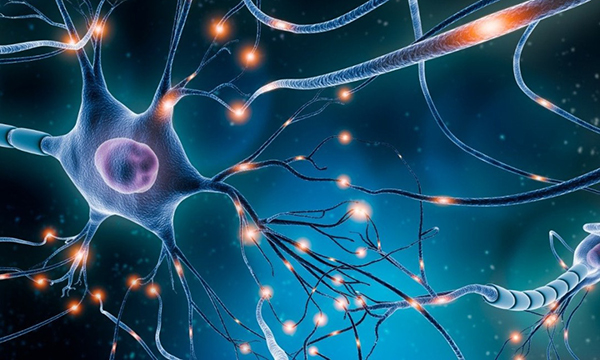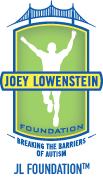JL Foundation™ : Tip of the Week
On this page the Joey Lowenstein Family Foundation (JL Foundation™) will create a library of “Tip of the Week” content — tips and videos about exercise, spirituality, and nutrition while living with autism. Joey’s hope is that through the Joey Lowenstein Family Foundation (JL Foundation™) and its focus on five areas — Athletics, Nutrition, Self-Development, Resolve, and Scientific Research, a combination we call ANSRS™ — he will be able to provide the many people who have autism with ideas, inspiration, and resources to find their own ANSRS™, so that they can fulfill their gifts and live their best lives.
Texture and Flavor Aversions
Many individuals with autism have aversions to certain textures or flavors, including plain water. The aversions can make it challenging for them to meet their hydration needs. The taste and mouthfeel of water may be perceived as unappealing or uncomfortable, leading to resistance to drinking it. Due to that, it’s important to explore alternative options or strategies to make water more palatable for individuals with autism. Supporting individuals with autism in developing self-care skills and establishing consistent hydration habits is essential.
Source: American Autism Association
www.GoldenCareTherapy.com/blogs-how-to-get-autistic-child-to-drink-water

Meditation and Mindfulness for Autism
Meditation and mindfulness are amazing and valuable treatments that have gained a lot of attention for individuals with autism.
There’s a difference between mindfulness and meditation.
Meditation is a planned practice, where you can spend a minute, an hour or more focusing in your inner self to create calmness, attentiveness and emotional balance, by putting all your attention in your breathing, and guiding your mind into a specific topic to focus on.
Mindfulness is being conscious of your existent in a particular moment and paying attention to your thoughts, feelings, movements and the affects you have on the people nearby.
Mindfulness and meditation connect with each other. They both can decrease stress and that’s something individuals with autism are prompted to.
Source: American Autism Association
www.myautism.org/news-features/meditation-and-mindfulness-for-autism

Autism : Scientific Research
What Is the Latest Research on Autism? — The Centers for Disease Control and Prevention (CDC) reports that among 8-year-old children, 1 in 36 are autistic. This number has increased from the one in 44 prevalence reported in previous estimates.
- More Black, Hispanic, and Asian children were identified with autism than White children. This is the first time the Autism and Developmental Disabilities Monitoring (ADDM) Network observed this finding among 8-year-old children.
- For every one girl identified with autism, four boys were identified with autism.
- More Black children with autism also had an intellectual disability than White and Hispanic children with autism.
Source: Children’s Health Council
www.chconline.org/resourcelibrary/what-is-the-latest-research-on-autism

Autism : Routine and Structure Tips
What are the best ways to create a routine for your autistic child? There are many different techniques to help your child keep their schedule. Of all of those techniques, these are the four we think are most effective. Keep in mind that if your child responds better to other techniques, then you should use those strategies.
- Stay Consistent
- Use Visual Supports
- Use Prompts for Transitions
- Encourage Your Child
1) Stay Consistent — Once you have set a schedule for your child, the most important thing is to be consistent with your child. If the schedule says to brush their teeth at 8:30 am, then you should have them brush their teeth at that time every day. You don’t have to be militant, but you do need to be consistent.
2) Use Visual Supports — Some of you may be wondering what visual supports are, so let’s go over them. Visual schedules and visual cues can help children with ASD keep their schedule by giving them a physical reinforcement of the routine you both have established. They also make maintaining routines interactive and fun.
3) Use Prompts for Transitions — Prompting your kids can help relieve the stress of change for them. A ten-minute warning before changing activities can help your child adjust more smoothly to switching to the next thing in your daily routine. For example, if you are taking a trip to the grocery store, give your child a twenty-minute warning before you start to leave.
4) Encourage Your Child — Perhaps this is the most important tip we can give you: encourage your child in their progress. No one wants to feel like they are failing at something, so positive reinforcement can help curb problem behaviors, and it can let your child on the autism spectrum know that they are doing well.
More information at: www.stepstoprogress.com/blog/autism

Introducing New Foods to People with Autism
Use a gentle approach: Be patient and encourage small steps. Create a positive association: Pair new foods with foods your child already likes, such as by putting them on the same plate or near each other. Let your child explore: Encourage them to touch, smell, and lick the food to get used to it. You can also let them play with it. Model eating — Let your child see you eating and enjoying the new food. Consider the texture: Some children with autism may be hypersensitive to different food textures. You can try introducing foods with similar textures to foods your child already likes.
More information at:

Autism and Sleep
According to the CDC, over 50% of people with autism have chronic sleep problems. An evening breathwork session can put you in the best optimal state for restorative sleep. Many people with autism spectrum disorder (ASD) experience sleep difficulties, which can impact how they feel and function during the day. Additionally, the sleep problems that children with autism experience can take a toll on their parents and caregivers. Practicing good sleep hygiene at home is important for everyone, not just people with autism. Good sleep habits are part of any sleep disorder treatment. Keep a consistent bedtime and wake up time. Do the same quiet activities before bed every night. An evening breathwork session can help to decompress and clear the nervous system to put you in the best optimal state for restorative sleep. In the morning, it sets your day with intension so that you are calm, present, and intentional about how you live your day. End your day clean, and start it clean.
More information at:
https://www.sleepfoundation.org/physical-health/autism-and-sleep

Autism and Exercise
Working out has brain benefits for those with autism — Exercise improves cognitive function, making it easier to retain information and maintain attention span. Exercise reduces anxiety and stress, which is important because individuals with autism tend to have higher stress levels; People with autism often have sleep disorders, and exercise helps improve sleep. When you are figuring out a workout routine, don’t get carried away with variety. These five types of exercise are a great place to start: motor planning exercises, functional strength training, balance training, indoor cycling, and yoga.
More information at:

The Food You Eat Matters : Avoid Sugar 2
Sugar Consumption and Neurotransmitters — Research suggests that there is a correlation between sugar intake and autism symptoms due to the impact of sugar on neurotransmitters in the body. Sugar increases erratic brain cell firing and it is very addictive.
Research appearing in Frontiers in Endocrinology found that people with autism have impaired glucose tolerance and excessive levels of insulin; consuming sugar may magnify improper insulin signaling. Avoiding forms of sugar and refined carbohydrates and increasing lean protein consumption can dramatically improve concentration and judgment.
More information: www.GoldStarRehab.com/parent-resources/sugar-and-autism-correlation

The Food You Eat Matters : Avoid Sugar
Avoiding sugar and refined carbohydrates can dramatically improve concentration and judgment, and decrease impulsiveness.
The food you eat matters. According to the CDC, autism is associated with an array of challenges, including developmental delays, communication problems, and behavioral issues. It is important to realize that the food you eat is either medicine or it is poison. It is either helping your brain, body, and mind or hurting them. Here are the top 5 foods to avoid as they can make autism and co-occurring condition symptoms worse: dairy, gluten, sugar, artificial ingredients (ie: preservatives, dyes, and artificial colors).
More information: www.amenclinics.com/blog/5-foods-can-make-autism-worse/

Breath Work: Warrior Breath
To help regulate himself in stressful situations, Joey uses the Warrior Breath breathing technique to reduce stress and anxiety.
Breath work is a powerful tool to use as a resource. It can be used to aid with autism stress, sleep disorders, anger issues, road rage, and post-traumatic stress disorder (PTSD). The Warrior Breath is a breathing technique that has a grounding element to it and can help you get back to center. It can move the brain from a “fight or flight” mindset, breaking the impulse and surge of adrenaline. Breathing in through the nose and powerfully out though the chest and nose, this breathing exercise is both energizing and calming; it can be a regulator system for the brain within under a minute.
Credit: Warrior Breath Set by Anjali Connors, PsyD
Upregulating Your Life
When making a decision for your life or health, ask yourself, is this the best decision I can make? Does it bring balance to my life? Does it help to upregulate my life?
Clarify and simplify your path forward. Complexity is the mother of procrastination for failure — when there is too much complexity with information it is really hard for people to settle in with what to do and how to do it.
upregulation
/ˌəpˌreɡ(y)əˈlāSH(ə)n/
Noun, physiology, biochemistry
- 1. the increase at the cellular level of the magnitude or rate of a physiological response or biochemical or process, especially of the expression of a gene.
- 2. the increase in the number or density of cell surface receptors for a physiologically active substance, causing an increase in sensitivity in response to persistent exposure.

“Eat to Live” or “Live to Eat”
You can “eat to live” or you can “live to eat”. The quality of the food you ingest determines the integrity of the cells that it builds in your body.
Food is life. Food is fuel. Without nutrition everything dies. Eating to live involves treating food like it is fuel for the body. Often, the inverse “live to eat” approach signals that a disproportionate amount of pleasure becomes vested chiefly or exclusively in the eating experience itself, which typically gives way to unhealthy choices. Simplicity is key — look at food quality and food integrity; look for organic and look for foods with one ingredient — whole foods. Limit or eliminate processed foods.

